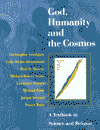Darwin’s Challenge to Theological PositionsIt is important to an understanding of the development of the ‘special relationship’ between evolutionary theory and theology to understand what it was about Darwin’s scheme which challenged 19th Century theological descriptions:
These three conclusions now form the accepted background from which most theology reflects on the biosphere. Readers may want to consider to what extent these challenges remain problems for a contemporary faith. How might Christian theological schemes address these problems? (If it is simply asserted that God has used the processes of
evolution to further divine purposes of creating a world in which there could
be creatures like ourselves, then a further problem arises which was already
known to Darwin, namely that evolution seems to contain such cruelty, waste and
ugliness as to make it hard to defend as the means to a divine end. One of the
strengths of Darwin’s theory was that it explained, without the need for any ad hoc hypotheses, both aesthetically
appealing adaptations, such as the beak of the woodpecker, and the ‘ugliness’
of species like the ichneumonidae -
wasps whose larvae are implanted within the body of a caterpillar and eat it
alive from the inside. See also the rhetoric of Darwinism, and from Darwinism to neo-Darwinism.
Email
link | Feedback | Contributed by: Dr. Christopher Southgate and Dr. Michael Robert Negus
|





